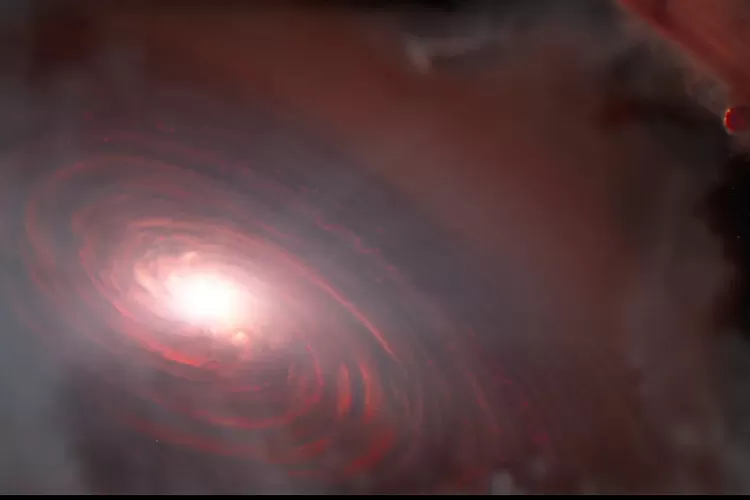SPACE — NASA’s James Webb Space Telescope (JWST) has finally confirmed the theory of the formation of Earth and other planets in our solar system. This clue was obtained from observations of planet-forming disks emitting cold steam.
The discovery by a telescope hovering between Earth and the Sun provides important evidence for the main theory of planet formation. Webb detected excess water vapor in two disks of gas and dust surrounding a young star 2 million to 3 million years old. The disk is located in the Taurus star-forming region, which is about 430 light years from Earth.
Astronomers believe that planets form through a process that begins with what is called ‘pebble accretion’. The process involves small chunks of silicate rock measuring several centimeters to one meter in size, which are coated with ice.
They are thought to have begun to exist on the outside of the frozen planet-forming disk. Usually in the area comets are scattered. Gradually, they begin to experience friction with the gas in the disk. This friction causes the gravel to lose its orbital energy, so it migrates or is dragged into the interior of the disk.
Also read: Five strange things that happen in outer space, some of which could happen to Earth
When they gather in the inner realm, the pebbles start to collide with each other so that they stick together. Slowly, they develop into larger and larger objects until they become protoplanets (forerunners of planets). From there, the protoplanet’s much stronger gravity swept away the other pebbles more quickly, speeding up their growth. That’s the long-standing theory of planet formation.
Back to Webb. Water vapor detected by Webb’s Mid-Infrared Instrument (MIRI) proves the existence of this process. Because, this type of water is thought to come from ice pebbles that migrate into the inner region of the disk.
As ice pebbles drift inward, they cross a boundary called the snow line. In our solar system, the snow line is just inside Jupiter’s orbit when the planets formed.
Inside the snow line, the temperature inside the disk is still too high to freeze water into ice. The layer of ice on the gravel will evaporate, causing the injection of cold water vapor into the interior of the disc.
That’s what the US$10 billion MIRI telescope detected.
“Webb finally uncovered the connection between water vapor in the inner disk and the movement of ice pebbles from the outer disk,” said Andrea Banzatti of Texas State University.
Banzatti is the lead author of a new paper describing the JWST observations. The results were published in the Astrophysical Journal Letters on Wednesday, November 8, 2023.
James Webb observed a total of four planet-forming disks. Two of the discs are quite compact, and two of the discs are elongated and have not undergone much inward migration. Water vapor is only found in the two compact disks discussed above.
Also Read: If the Earth Stops Rotating, What Will Happen?
2023-11-09 13:07:00
#NASAs #Webb #Telescope #Confirms #Earth #Formation #Process #Space


